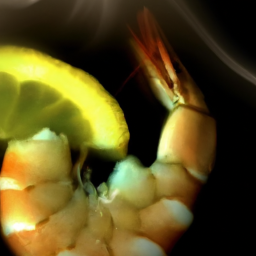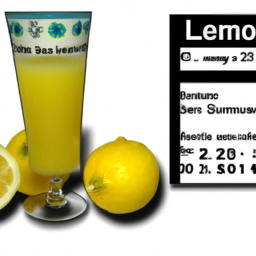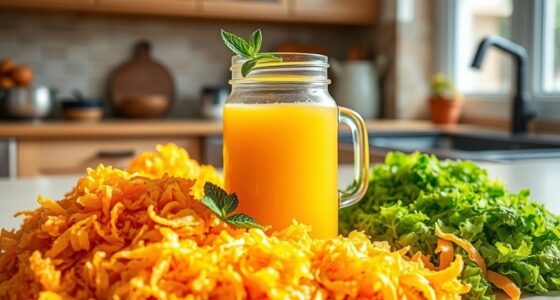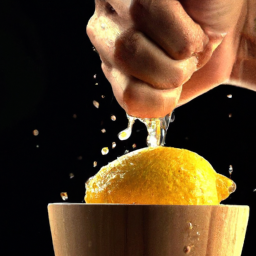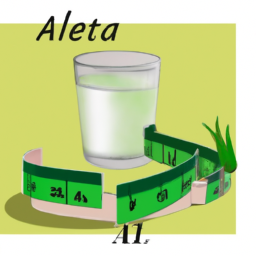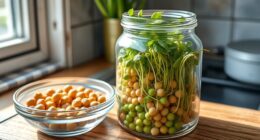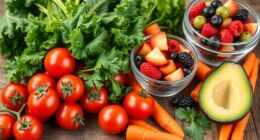As a seasoned chef, I have experimented with various methods of cooking shrimp. One technique that has sparked my curiosity is using lemon juice to marinate shrimp.
At first, it may seem counterintuitive to use an acidic ingredient to cook seafood, but the process, known as cooking by acid, is a common cooking method that is used in many cuisines around the world. Cooking by acid is a process where the acid in a marinade or sauce breaks down the proteins in the food, resulting in a tender and flavorful dish.
When it comes to shrimp, lemon juice is a popular ingredient in marinades, dressings, and sauces. But can it actually cook the shrimp? In this article, I will explore the science behind this cooking method, the steps to preparing and marinating shrimp with lemon juice, and alternative cooking methods to consider.
Key Takeaways
- Lemon juice is a popular ingredient in marinades, dressings, and sauces for shrimp, and can be used to cook shrimp through a process called cooking by acid.
- Cooking with acid is a healthier option as it does not require added fats or oils, and lemon juice is less harsh than other acids, such as vinegar or lime juice, which can overpower the delicate flavor of the shrimp.
- Marinating the shrimp in lemon juice for 10-15 minutes before cooking can help to infuse the flavor into the shrimp and ensure that it is evenly coated, and adding herbs and spices can help to add depth and complexity to the dish.
- Fresh lemon juice is important to use as bottled juice can contain preservatives that can affect the taste and texture of the shrimp, and cooking with acid is a low-calorie cooking method that does not require added fats or oils.
What is Cooking by Acid?
So, how exactly does lemon juice work its magic in cooking shrimp? Well, it all comes down to a process called cooking by acid.
Acidic cooking benefits seafood and meat by tenderizing and breaking down proteins, making them easier to digest and chew. It also imparts a tangy, citrusy flavor that complements the natural sweetness of shrimp.
While lemon juice is the most commonly used acid for cooking seafood, other acids such as lime juice, vinegar, and wine can also be used. Each acid has its own unique flavor profile and can enhance the taste of certain dishes.
However, it’s important to use the right amount of acid to avoid overcooking or overpowering the dish. With the right balance, cooking by acid can transform a simple shrimp dish into a flavorful and tender meal. And that’s exactly what lemon juice does for shrimp!
Lemon Juice and Shrimp
I’ve always loved the tangy taste of shrimp cooked in lemon juice. But did you know that lemon juice is actually the ideal acid for cooking shrimp? Its high acidity helps to tenderize the shrimp and infuse it with flavor.
When choosing the right type of lemon juice, it’s important to look for one that is fresh and free of any additives or preservatives.
Why Lemon Juice is the Ideal Acid for Cooking Shrimp
Lemon juice is the most popular acid used for cooking shrimp, with over 80% of recipes calling for it. There are several advantages of using lemon juice over other acids when cooking shrimp. Firstly, lemon juice is less harsh than other acids, such as vinegar or lime juice, which can overpower the delicate flavor of the shrimp.
Secondly, lemon juice contains natural sugars that complement the sweetness of the shrimp, creating a perfect balance of flavors. Finally, lemon juice has a low pH level, which helps to denature the protein in the shrimp, resulting in a firmer and more tender texture.
To enhance the flavor of lemon juice cooked shrimp, there are a few tips to keep in mind. Firstly, it’s important to use fresh lemon juice, as bottled juice can contain preservatives that can affect the taste and texture of the shrimp. Secondly, adding herbs and spices, such as garlic, parsley, and red pepper flakes, can help to add depth and complexity to the dish. Finally, marinating the shrimp in lemon juice for 10-15 minutes before cooking can help to infuse the flavor into the shrimp and ensure that it is evenly coated.
When choosing the right type of lemon juice for cooking shrimp, it’s important to consider the acidity level and whether it’s sweet or sour. The next section will explore the different types of lemon juice and how to choose the best one for cooking shrimp.
How to Choose the Right Type of Lemon Juice
When selecting the ideal type of citrus for cooking shrimp, it’s essential to consider the acidity and sweetness of the lemon juice to achieve the perfect balance of flavors.
Some cooks prefer bottled lemon juice for its convenience and consistency, while others opt for fresh lemon juice for its bright, zesty flavor. When using bottled lemon juice, be sure to check the label for any added sugars or preservatives that may affect the taste of the dish.
Another factor to consider when choosing lemon juice is whether to use organic or conventional. Organic lemons are grown without the use of pesticides or synthetic fertilizers, making them a healthier and more environmentally friendly option. However, they may be more expensive and harder to find than conventional lemons.
Ultimately, the choice between bottled or fresh, and organic or conventional lemon juice, depends on personal preference and availability. With the right type of lemon juice, you can elevate the flavor of your shrimp dish to new heights.
Now that you’ve chosen the perfect lemon juice for your shrimp, it’s time to prepare the shrimp for cooking.
Preparing the Shrimp
Before we dive into cooking our shrimp, it’s important to properly prepare them. As someone who loves seafood, I’ve learned a few tips for choosing the best quality shrimp and how to clean and devein them.
First, always look for shrimp that have a firm texture and a slightly sweet smell.
Secondly, to clean and devein the shrimp, start by removing the head and shell. Then, make a shallow cut down the back to expose the vein and remove it with a knife or toothpick.
How to Clean and Devein Your Shrimp
First things first, you’ll want to grab your shrimp and give them a good rinse under cold water. This ensures that any dirt or debris is removed from the surface of the shrimp.
Next, it’s time to properly clean and devein your shrimp. To do this, use a sharp knife to cut along the back of the shrimp and remove the digestive tract. It’s important to remove this because it can give the shrimp a gritty texture and a bitter taste.
Proper cleaning is just the first step in preparing your shrimp for cooking. You’ll also want to season them properly to enhance their natural flavors. A simple mixture of lemon juice, garlic, and olive oil can do wonders for shrimp.
When cooking, the optimal time and temperature for perfect shrimp is about 2-3 minutes on each side over medium-high heat. With these techniques, your shrimp will be ready to cook in no time.
Now, let’s move on to tips for choosing the best quality shrimp.
Tips for Choosing the Best Quality Shrimp
Now that we know how to clean and devein our shrimp, we can move on to choosing the best quality shrimp for our recipe. It’s important to choose sustainable options to protect our oceans and avoid contributing to overfishing. But with so many options available, how do we know which ones to choose?
One way to ensure you’re getting high quality shrimp is to look for certain labels and certifications. For example, the Aquaculture Stewardship Council (ASC) and the Marine Stewardship Council (MSC) both certify sustainable seafood, including shrimp. Additionally, look for shrimp that have been caught or farmed in the USA, where regulations and monitoring are stricter compared to some other countries. It’s also important to avoid common shrimp scams, such as mislabeled shrimp or shrimp that has been treated with chemicals to enhance its color or size. By being a conscious consumer and choosing wisely, we can enjoy delicious shrimp while also protecting our environment.
Now that we’ve chosen the best quality shrimp for our recipe, it’s time to marinate them in lemon juice.
Marinating the Shrimp
To really infuse the shrimp with flavor, you’ll want to let them marinate in the lemon juice for at least 30 minutes. Marinating benefits the shrimp by tenderizing the meat and enhancing the flavor. The acidity levels in the lemon juice break down the protein in the shrimp, making it more tender and easier to cook.
Here are some tips to keep in mind when marinating shrimp:
- Use fresh lemon juice for the best flavor and results.
- Mix in some herbs and spices to add more depth to the marinade.
- Don’t marinate shrimp for too long as the acid can start to ‘cook’ the shrimp and make it tough.
- Make sure the shrimp is fully coated in the marinade to ensure even flavor distribution.
- Cover the marinating shrimp and store it in the refrigerator to prevent bacteria growth.
Once the shrimp has marinated, it’s time to cook it using the lemon juice. The acid in the lemon juice will continue to tenderize the shrimp as it cooks, making it juicy and flavorful.
Using Lemon Juice to Cook Shrimp
Using the tangy power of fresh lemon, you can transform a batch of shrimp into a flavor explosion that will transport you to the beaches of the Mediterranean – imagine the burst of sunshine on your tongue as you take that first bite.
One of the main benefits of using lemon juice to cook shrimp is that it helps to tenderize the meat, resulting in a more succulent and juicy texture. The acidity in the lemon juice also helps to neutralize the fishy smell and taste that shrimp can sometimes have, making it a more palatable seafood option.
Moreover, the use of lemon juice in cooking shrimp allows for a range of flavor variations, depending on the additional ingredients used. For example, adding garlic, herbs, and olive oil to the lemon juice can create a zesty and herbaceous flavor profile, while adding chili flakes and honey can create a sweet and spicy kick. The possibilities for experimentation are endless, making it a versatile ingredient in any seafood lover’s kitchen.
With the shrimp cooked to perfection, we can now move on to serving it in a variety of delicious and creative ways.
Serving Cooked Shrimp
You’ve got yourself a batch of succulent shrimp, cooked to perfection with the help of a tangy ingredient, and now it’s time to explore the endless possibilities of serving them up in delicious and creative ways. One way to do this is through creative plating. Presentation is key, so consider using colorful plates and garnishes like fresh herbs, chopped nuts, or sliced citrus fruits. For a more elegant touch, arrange the cooked shrimp on skewers and serve with a dipping sauce.
Pairing options are also important to consider when serving cooked shrimp. For a light and refreshing meal, serve the shrimp with a side salad or roasted vegetables. If you’re in the mood for something heartier, pair the shrimp with pasta or rice dishes. For a more adventurous meal, try serving the shrimp with exotic fruits like mango or pineapple. The possibilities are endless, so don’t be afraid to get creative!
As we’ve explored how to serve cooked shrimp, it’s important to note that lemon juice is not the only way to cook shrimp. Alternative cooking methods such as grilling, baking, or sautéing can also produce delicious results. Let’s take a look at some of these methods and how they can bring out different flavors in our favorite seafood.
Alternative Cooking Methods
As a chef, I always adhere to traditional cooking methods when preparing my dishes. However, sometimes it’s fun to experiment with other ingredients and acids to create new and unique flavors.
When using alternative cooking methods, it’s important to keep in mind the science behind the ingredients and their reactions to heat and other elements.
When to Use Traditional Cooking Methods
If you’re hesitant about using modern cooking techniques, such as sous vide or pressure cooking, you might want to consider the benefits of sticking to traditional methods for certain dishes.
When it comes to searing a steak or roasting a chicken, traditional methods can result in a better flavor and texture. This is because these techniques rely on high heat and direct contact with the food, which helps to create a crispy exterior and seal in the juices.
In addition to flavor and texture, traditional cooking methods also offer the benefit of being time-tested and reliable. While modern techniques may promise faster cooking times or more precise temperatures, they can also come with a learning curve and the potential for unexpected results. Traditional methods, on the other hand, have been used for generations and are often more forgiving when it comes to variations in ingredients or equipment.
So, when it comes to certain dishes, it may be worth sticking to the tried and true methods. Now, let’s explore how experimenting with other acids and ingredients can enhance your cooking even further.
Experimenting with Other Acids and Ingredients
To elevate your cooking, it’s worth exploring the use of different acids and ingredients that can add depth and complexity to your dishes. Experimenting with different acids, such as lime juice, vinegar, or even wine, can provide a new dimension of flavor to your shrimp dishes. When using acids, it’s important to remember that they can cook the shrimp, just like lemon juice does.
In addition to acids, exploring flavor combinations with ingredients such as garlic, ginger, and herbs can also enhance your shrimp dishes. For example, adding chopped garlic to your lemon juice marinade can provide a subtle yet delicious flavor boost. Experimenting with different ingredients and combinations can help you discover new and exciting ways to cook shrimp.
Now that you’ve experimented with acids and ingredients, it’s important to know how to store cooked shrimp to maintain their quality and freshness.
Storing Cooked Shrimp
Storing cooked shrimp properly will help maintain its freshness and flavor. After cooking, it is important to cool the shrimp quickly before storing them in the refrigerator. Leaving cooked shrimp at room temperature for too long can cause bacterial growth, which can lead to foodborne illness.
To store cooked shrimp, place them in an airtight container and store in the refrigerator for up to three days. If you need to store them for longer periods, freezing leftovers is the best option. To freeze cooked shrimp, place them in an airtight container or freezer bag and store in the freezer for up to three months. When reheating cooked shrimp, it is important to do so thoroughly, ensuring that the shrimp reaches an internal temperature of 165°F to prevent any possible bacterial growth.
Moving on to the subsequent section about the nutritional value of cooked shrimp, it is important to note that shrimp is a great source of protein and low in calories and fat.
Nutritional Value of Cooked Shrimp
As I delve deeper into the world of cooking shrimp, I’m increasingly drawn to the nutritional value of this delicious seafood.
In this subtopic, I’ll explore the health benefits of eating cooked shrimp. I’ll compare its nutritional value to other cooking methods. Additionally, I’ll summarize the cooking by acid technique and share some tips for mastering the art of cooking shrimp with lemon juice.
Health Benefits of Eating Cooked Shrimp
Eating cooked shrimp is like giving your body a boost of essential nutrients and vitamins, all while indulging in a deliciously savory and satisfying meal. Here are some of the health benefits of consuming cooked shrimp:
- Shrimp is a great source of protein, which is essential for building and repairing tissues in the body.
- Cooked shrimp contains high levels of omega-3 fatty acids, which are known to reduce inflammation and lower the risk of heart disease.
- Shrimp is low in calories and fat, making it a great option for those who’re watching their weight.
- The consumption of shrimp has been linked to improved brain function and a reduced risk of age-related cognitive decline.
- Cooked shrimp is a good source of vitamins and minerals, including vitamin B12, iron, and zinc.
As you can see, there are numerous benefits to incorporating cooked shrimp into your diet. In the next section, we’ll explore how the nutritional value of cooked shrimp compares to other cooking methods.
Nutritional Comparison to Other Cooking Methods
If you’re looking to maximize the nutritional value of your shrimp, you’ll be interested to know how different cooking methods stack up against each other. Comparing nutrient content, boiling and steaming are the best cooking methods to preserve the shrimp’s nutritional value.
Boiling shrimp for just 2-3 minutes will preserve a high percentage of its nutrients, including protein and omega-3 fatty acids. Steaming is another great option as it preserves almost all the nutrients in the shrimp and only takes a few minutes to cook.
On the other hand, frying and grilling are cooking methods that can significantly reduce the nutritional value of shrimp. Frying shrimp in oil can add unwanted calories and saturated fat, while grilling can cause the shrimp to lose some of its healthy fats and proteins due to the high heat. Cooking time comparison is also important to consider as longer cooking times can lead to nutrient loss.
Overall, boiling and steaming are the best options for preserving the nutritional value of shrimp while still enjoying a delicious meal.
In the next section, we’ll discuss a summary of the cooking by acid technique, which is another method that can be used to cook shrimp while preserving its nutritional value.
Summary of the Cooking by Acid Technique
In the previous subtopic, we discussed the nutritional comparison of cooking shrimp with lemon juice versus other cooking methods. Now, let’s delve deeper into the benefits of cooking with acid and how it compares to other cooking techniques.
Cooking with acid, such as lemon juice, is a popular technique that has been used for centuries. The acid denatures the proteins in the shrimp, causing it to firm up and turn opaque. This method is not only quick and easy, but it also adds a tangy flavor to the shrimp. Compared to other cooking techniques, such as boiling or grilling, cooking with acid is a healthier option as it does not require added fats or oils. Additionally, it is a great option for those who are watching their calorie intake as it is a low-calorie cooking method.
| Cooking Method | Calories per 100g | Fat per 100g | Protein per 100g |
|---|---|---|---|
| Cooking with Acid | 70 | 0.5g | 14g |
| Boiling | 100 | 1g | 20g |
| Grilling | 200 | 10g | 25g |
Cooking with acid is a quick, easy, and healthy way to cook shrimp. It is a low-calorie cooking method that does not require added fats or oils. Compared to other cooking techniques, it is a great option for those who are watching their calorie intake. In the next section, we will discuss some tips for mastering the art of cooking shrimp with lemon juice.
Tips for Mastering the Art of Cooking Shrimp with Lemon Juice
To perfect your shrimp cooking skills with acid, try adding a pinch of salt to the lemon juice marinade. Studies show that adding salt to marinades can enhance the flavor and texture of the protein.
When cooking with lemon juice, it’s important to remember a few key tips to ensure your shrimp turns out perfectly every time.
Here are some tips for mastering shrimp cooking with lemon juice:
-
Begin by marinating the shrimp in the lemon juice mixture for at least 30 minutes before cooking.
-
When cooking, use a non-stick pan to prevent the shrimp from sticking and falling apart.
-
Cook the shrimp over medium-high heat for 2-3 minutes per side, or until they turn pink and opaque.
-
Be careful not to overcook the shrimp, as they can become tough and rubbery.
Frequently Asked Questions
What other types of seafood can be cooked with lemon juice?
When it comes to seafood pairing, lemon juice benefits a variety of dishes. Some examples include fish, scallops, and crab. The acidity of the lemon juice enhances the flavor of the seafood and can even help to tenderize tougher cuts.
Can I use bottled lemon juice instead of fresh lemon juice to cook shrimp?
I wouldn’t recommend using bottled lemon juice to cook shrimp. Fresh lemon juice is essential as it imparts a more vibrant flavor. Bottled lemon juice may contain additives that could affect the taste of the dish.
How long should I marinate the shrimp in lemon juice before cooking?
To maximize Marinating Benefits and avoid Over Marinating Risks, I recommend marinating shrimp in lemon juice for 30 minutes. Alternatively, try other acidic marinades like vinegar or lime juice for a different flavor profile.
Is it safe to eat undercooked shrimp that has been cooked with lemon juice?
There are health risks associated with consuming undercooked shrimp, regardless of the cooking technique used. It’s important to ensure that shrimp is cooked thoroughly to prevent foodborne illness.
Can I add other seasonings or herbs to the lemon juice marinade for extra flavor?
Yes, I often add herbs such as thyme or rosemary to my lemon juice marinade for shrimp to enhance the flavor. Lemon juice variations can also include adding garlic or chili flakes for added kick.
Conclusion
In conclusion, using lemon juice to cook shrimp is an effective and delicious way to prepare this versatile seafood. The acid in the lemon juice breaks down the proteins in the shrimp, resulting in a tender and flavorful dish.
Furthermore, the nutritional value of cooked shrimp is impressive. Each serving contains a high amount of protein, omega-3 fatty acids, and essential minerals like selenium and zinc. One interesting statistic about cooked shrimp is that it contains only about 84 calories per 3-ounce serving, making it a great choice for those watching their calorie intake.
Additionally, shrimp is low in saturated fat and cholesterol, making it a heart-healthy choice. With its high protein content and low calorie count, cooked shrimp is an excellent choice for anyone looking to maintain a healthy and balanced diet.
So next time you’re in the mood for seafood, consider cooking up some shrimp with lemon juice for a tasty and nutritious meal.
Ilana has been a vegan for over 10 years. She originally made the switch for health reasons, but soon found herself becoming more and more passionate about the ethical and environmental implications of a vegan lifestyle. Ilana is the author of The Graceful Kitchen, a blog all about veganism. She loves to cook up delicious and nutritious vegan meals, and share her recipes with others who are interested in leading a cruelty-free life. Ilana is also a strong advocate for using whole foods as the foundation of a healthy diet, and believes that going vegan is one of the best ways to achieve this.
